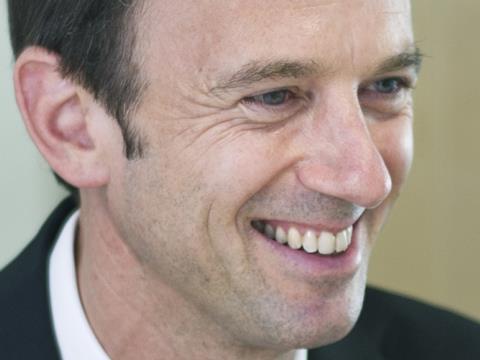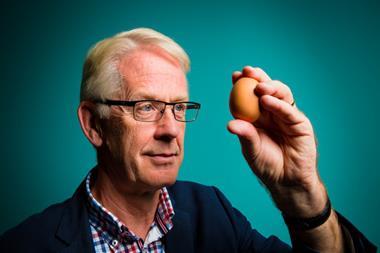With three enquiries since the turn of the century, the competition authorities seem to be constantly under the spotlight. The Competition & Markets Authority was at it again last week, taking issue with the supermarkets, and Asda in particular, over their use of misleading deals, following a so-called ‘Super-Complaint’ by Which?.
And while that case has now closed, Adjudicator Christine Tacon is consulting with the CMA over concerns about payments for category captaincy and shelf positioning.
In the meantime, the CMA’s investigation into Sainsbury’s proposed bid for Home Retail Group has barely begun, but already, there are fears a Phase II investigation is on the cards, with respected City analyst Clive Black calling, in his column in The Grocer last week, for the government “to start investigating the efficacy of the CMA” following a number of “time-wasting” “debacles” involving “pointless pseudo-academic analysis”.
So how does the CMA view the sector these days? How exactly does it make its decisions? And is it fit for purpose given the dynamics of today’s complex and fast-changing market?
In a rare interview, The Grocer spoke to Alex Chisholm, the CMA’s genial and aristocratic CEO. He’s been in charge since the CMA - itself the result of a merger (between the Office of Fair Trading and the Competition Commission) - was set up in 2013. And it’s changed in a number of ways, he says.
In the first instance, there’s greater transparency. Decisions are no longer made behind closed doors: if you are involved in an enquiry you get to meet with the decision maker.
Then there’s the people at the CMA. And the skills it hires. With a budget of £66m, the merged entity has 600 employees, around 200 less than the CC and OFT combined. But it hasn’t just been a cost-saving exercise. “There are two ways you can bring about new behaviour. You can get the same group of people doing different things. Or you can get a new group of people taking different approaches. We’ve done a bit of both. We’ve taken the skills from the remedies business team and used it right across the organisation, but we’ve also brought in a lot of new people. Five of the six executives on the senior team were not in the legacy bodies. There are over 200 new staff working here.”
Chisholm is pleased with the agency’s progress. And in particular its speed of response. “Our mergers work does affect the sector quite a lot. Supermarkets are asked for evidence, and they’re very responsive, which we’re grateful for, but we’ve made a real point of trying to get them done in less than 35 days, reduced pre-notification, and got quicker at publishing decisions.”
Chisholm notes that 75% of “less complex cases” cleared within 35 days in 2015/16 versus 25% the previous year. And the average number of working days across all Phase 1 cases was down from 37 to 34.
The CMA has also made increased use of undertakings in lieu (suggesting remedies that would avoid a Phase 2 investigation), including in the Poundland 99p Stores deal and Müller-Wiseman’s acquisition of Dairy Crest’s non-branded assets. “Every time that saves a business six months.”
OK, so it’s quicker. But with referrals increasing to 18% of all M&A in 2015/16, is the CMA applying enough common sense? “It’s quite common in mergers for people to say something is or seems obvious. Unfortunately we have to look very carefully and even-handedly at the evidence.”
Listening
But the CMA is open to persuasion. “We are always keen for firms and consumer groups to come up with the evidence for the reality of how the market is changing.”
Chisholm also refutes accusations that its surveys into retail mergers and acquisitions are limited to “micro market” examinations. This “conservative” approach has been favoured in the Poundland/99p Stores merger and also the ongoing Lloyds/Celesio acquisition of Sainsbury’s pharmacy business.
But the CMA is “really open to the impact” of online shopping. “It’s having a big impact, in some sectors more than others. In grocery, of course, the vast majority are still shopping in stores but it’s certainly having a big impact in books and CDs.”
While Chisholm won’t comment on the Sainsbury’s/HRG merger (“it’s early days”) in such markets, where digital can account for 50% of transactions, the extensive surveys it conducts will include online analysis, he stresses. “And it’s not just how much people are buying online or how many hours people are online. It’s much more about the particular product or service. What is the buyer behaviour you see? What do they see as the alternatives?”

This nuanced view of the market is certainly the case with Amazon. On the one hand - and despite so many independent booksellers having been wiped out - Chisholm broadly welcomes Amazon’s impact.
“We have looked at Amazon’s behaviour in relation to publishing and bookstores and which parts are in the interests of consumers. So: there are more books published than ever before; it’s easier to be an author; books are generally cheaper; they’re more convenient to get hold of; and people are reading more. Those are not typically the consumer distress signals you get in a market being turned against consumer interest.”
But again Chisholm is “very aware of the potential for monopolistic behaviour at Amazon and the CMA has spoken out against Amazon’s use of restrictive clauses, and worked closely with the EU to support their case.
So how does the CMA strike the right balance between harm and innovation and growth? “It’s often difficult to judge in the moment. It takes place over time and can be hard to see. What you are alluding to is a wider phenomenon of digital markets. For example it’s very powerful to compare price. But we need to be alive to quality being reduced as a consequence. We were alive to that in the Super Complaint, for example.”
Competition
As to the current competitive landscape, Chisholm “warmly acknowledges” how hard firms are working to attract and retain customers. “Grocery is getting a lot more competitive compared to the period when the OFT chose to refer the grocery sector. In part that is from the expansion of the limited assortment discounters. They have become less limited at the same time as customers have become more curious.”
Online is also a force for good, he believes. “The advent of online, the convenience it brings, but also the comparability that comes with it, the fact consumers can now compare prices much more easily online puts great pressure on the market to provide value.”
So what’s with the Super-Complaint? While acknowledging “there are a lot of offers” (in fact the CMA is nothing if not thorough, investigating one million) Chisholm wants to make sure “special offers really are special”.
“There’s a certain customer - I’m one of them - that looks around for different offers. That’s fine, it’s a phenomenon of customer behaviour. All we want is that an offer is genuine and not the normal price.”
Big Three?
Of course the irony in all this is that, with the blizzard of deals - genuine or otherwise - failing to challenge the growth of the discounters, promotions are now running at a seven-year low [Nielsen]. More worrying still for the big four is how their greater use of EDLP has failed to stem the fall in sales and profits at the big four (Sainsbury’s results this week a case in point), and their share prices remain in the doldrums.
This continuing weakness raises another important point. Whether the CMA would allow one of the big four to go to the wall and be carved up. Or whether it might be happy, under the circumstances, for the market to consolidate, as it has in other sectors.
It was in a previous enquiry that the principle of a ‘big four’ was established, with the Competition Commission maintaining that four national players (with a market share of at least 8%) were needed to ensure healthy competition. Yet Aldi and Lidl have proved it’s possible to compete - in fact to completely disrupt the market - with a much smaller individual market share than 8%. And a recent speculative story in a legal publication called Parr appeared to be testing the waters for a change in competition guidance, suggesting Tesco might merge with Morrisons.
So is it time for the CMA to revise its slavish reliance on a big four? “We don’t have a policy position on the number,” says Chisholm, intriguingly, before adding “there is no immediate prospect of an investigation.
“But firms could come to us for confidential guidance, and some do. We’re also very alive to the question of companies going to the wall. Quite often people use the failing firm defence, and we’re open to it, but we need evidence. It’s more often said than the actuality.”
Snapshot
Name: Alex Chisholm
Job: CEO, Competition & Markets Authority
Age: 48
Status: Married to Eliza, with three boys
Home: During the week lives in a flat in Latimer Road near Notting Hill. At the weekends lives in Dublin with his family
Education: Downside School; Merton College, Oxford; INSEAD Business School
Career: Worked at the DTI and OFT for six years, specialising in media, comms and financial services. Held senior executive positions at The Financial Times/Pearson plc, and at tech firms eCountries Inc and Ecceleration. At the same time he ran Heritage Gardening, selling rare bulbs, while acting as a business mentor with Enterprise Ireland. He sold Heritage when he started at ComReg, Ireland’s communications regulatory agency. Took up CMA role in 2013.
Proudest achievement at the CMA? Achieving over £10 in consumer benefit for every £1 we have spent
Pet peeve? Deadlines expressed in terms of split months, as in “we’ll finish by May/June” (always means June)
Favourite food and drink? Nuts and smoothies, anything on special offer
Favourite supermarket: I use them all, including online















No comments yet